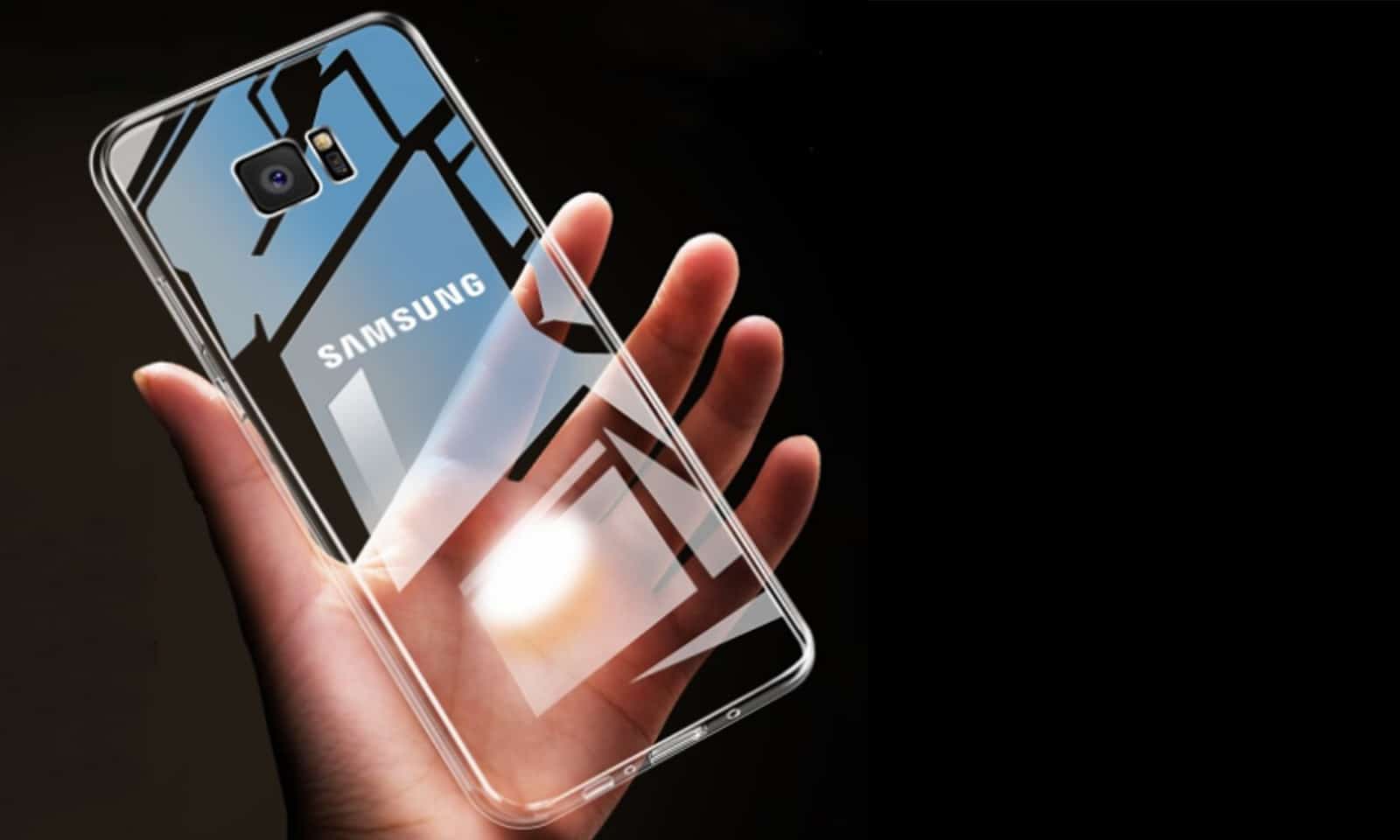Samsung has patented a cutting-edge technology for the development of a futuristic transparent smartphone that allows users to see through the device completely. Last month, Samsung announced a series of new Galaxy products, including the Galaxy Z Flip 5G and the Galaxy Z Fold 2 foldable smartphones. The Galaxy Note 20, Note 20 Ultra tablets, Galaxy Watch 3 smartwatch, Tab S7 and S7 Plus and Galaxy Buds Live headphones were also announced. One by one, high-end devices packed with technological innovations. But what more can we expect from the Korean manufacturer in the future?
From time to time, we hear about transparent smartphones. Although various smartphone manufacturers have been developing this cutting-edge technology for decades, there are still no completely transparent devices. Back in 2018, LetsGoDigital reported on a Sony smartphone with a double-sided transparent screen. Korean counterpart LG has even patented a transparent foldable phone. Samsung in turn seems to be working in the background on developing a transparent display device.
Samsung transparent smartphone
In January 2020, Samsung Electronics filed a utility patent with the United States Patent and Trademark Office (USPTO) and the World Intellectual Property Office (WIPO). The patent was published on August 27, 2020 and describes the technology needed to create a transparent smartphone. Alternatively, the technology could also be applied to other consumer electronics products, such as a TV, monitor, laptop, game console and/or camera.
As a basis, an OLED display is used, which is characterized by low power consumption, high brightness and faster response time than conventional LCD displays. The OLED screen is equipped with a transparent light display panel through which light can shine. Thus, content can be displayed on the transparent screen while users can simultaneously see through the phone.

It can be a flat screen, but also a flexible screen that can bend, fold and/or roll – according to the patent description. It is a technically defined patent that goes into detail about the different layers and components needed to achieve transparency.
The patent images show a modern smartphone with narrow bezels and a large transparent screen.
Advantages and disadvantages of transparent phones
Of course, this sounds quite futuristic, a cell phone that can be put in transparent mode to see directly through the device. Your friends will definitely want to check it out! But is it feasible and what are the direct advantages and disadvantages of this technological innovation?
Although transparent phones are not yet available, we have seen a few prototypes of transparent mobile screens over the years. Some phones have also been offered with such a display, such as the Sony Ericsson Xperia Pureness.
Chinese smartphone maker Xiaomi also regularly releases transparent editions, including the recently introduced Xiaomi Mi 10 Ultra. However, only the back of these devices is transparent. This gives users an overview of the components that are in the phone.
This immediately reveals an important drawback with regard to the development of true transparent smartphones. Where should the necessary components such as the battery, PCM and camera be placed if the device is transparent on both sides? These cannot be placed behind the screen as is currently the case. It is therefore very plausible that a transparent smartphone has a relatively large bezel to handle the necessary components.
However, this large bezel is not visible on Samsung’s drawings. This was the case, for example, with the transparent Sony smartphone, which had a large metal frame at the bottom. However, the patent description describes that Samsung can also choose to make only part of the screen transparent, perhaps this can help solve this problem. In addition, manufacturers have been working for some time on the possibility of reducing the size of components without compromising functionality.



